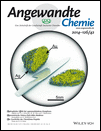N-Methylacridinium Salts: Carbon Lewis Acids in Frustrated Lewis Pairs for σ-Bond Activation and Catalytic Reductions†
The Leverhulme Trust (ERC) and the Royal Society (for a University Research Fellowship to MJI) are acknowledged for funding. This work was also funded by the EPSRC (grant number EP/K039547/1). The authors would like to acknowledge the use of the EPSRC UK National Service for Computational Chemistry Software (NSCCS) at Imperial College London in carrying out this work.
Abstract
N-methylacridinium salts are Lewis acids with high hydride ion affinity but low oxophilicity. The cation forms a Lewis adduct with 4-(N,N-dimethylamino)pyridine but a frustrated Lewis pair (FLP) with the weaker base 2,6-lutidine which activates H2, even in the presence of H2O. Anion effects dominate reactivity, with both solubility and rate of H2 cleavage showing marked anion dependency. With the optimal anion, a N-methylacridinium salt catalyzes the reductive transfer hydrogenation and hydrosilylation of aldimines through amine–boranes and silanes, respectively. Furthermore, the same salt is active for the catalytic dehydrosilylation of alcohols (primary, secondary, tertiary, and ArOH) by silanes with no observable over-reduction to the alkanes.




